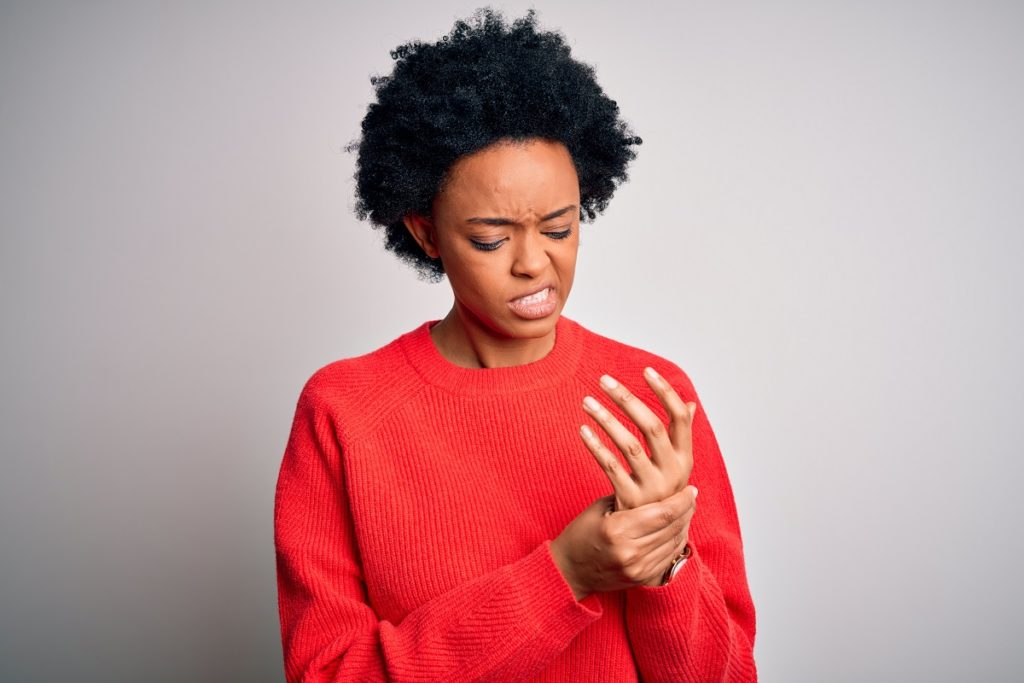By Michael Hwang, MD, orthopedics and sports medicine

Follow the outer edge of your thumb down past the knuckles to where it meets your wrist, and you’ll land in a spot that is a common cause of pain for many adults. This is where two tendons that run along the thumb side of the wrist pass through a narrow tunnel to connect to the base of the thumb. These tendons help you grip, grasp and pinch with your hand, but if the tunnel becomes inflamed, the tendons can become pinched and inflamed themselves. The result is a painful condition known as De Quervain’s tenosynovitis.
I see this condition regularly in my practice. It’s most common in people aged 30-50, and especially in women, who outnumber male patients by about six to one. Those most likely to get it are people who overuse these tendons through repetitive activities, such as gardening, playing tennis, or lifting and carrying a new baby. Among new mothers, in fact, De Quervain’s is so common that it’s often referred to as mommy thumb.
Relieving the pain of De Quervain’s
For pain relief, bracing and anti-inflammatories are good places to start. Using topical or oral anti-inflammatories will relieve pain and inflammation, and immobilizing the wrist and thumb in a brace will give the tendons a rest. These measures may be all you need for notable improvement over the course of three to four weeks.
While a brace might not be practical for a new parent, a baby carrier or sling can help reduce stress on the wrist. Fortunately, mommy thumb symptoms almost always resolve once the child gets older. Until then, there are other therapies that can help.
If symptoms go on for more than a month, it’s worthwhile to check in with your primary care provider, especially if the pain is interfering with your daily activities, work, hobbies or parenting. A home exercise program for the wrist and hand, guided by your provider or an occupational therapist, may be helpful. A corticosteroid injection, which is a strong anti-inflammatory that’s injected around the tendon, is another option – it can be curative about 60% of the time. Your primary care provider can provide the injection or refer you to an orthopedic surgeon who can. If none of these measures helps, an orthopedic surgeon can explain a surgical option to open the tunnel around the tendon.
In some people, treatment can improve the condition within a few weeks – in general, the sooner you start, the better the results. Some people, however, take several months or even longer to improve, but most eventually do. The good news is that I rarely see anyone with recurrent De Quervain’s tenosynovitis. Once it’s treated and resolved, it hardly ever comes back.
De Quervain’s tenosynovitis can be surprisingly painful, so don’t hesitate to see your provider if you have symptoms, especially if they’re not improving with self-care. This is a treatable condition, not something you just have to put up with. Your health care team is here to give you a hand.


